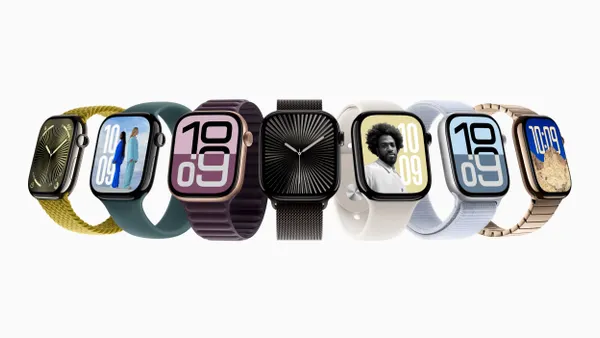Dive Brief:
-
Microsoft has filed a patent for eyeglasses that monitor the wearer’s pulse and blood pressure using optical sensors.
-
The experimental device continuously and passively monitors blood pressure, freeing patients from the need to manually take measurements using oscillometric cuffs.
-
Microsoft’s interest in the technology puts it in competition with familiar rivals from the tech sector, including Apple and Google’s parent company Alphabet.
Dive Insight:
The potential for devices to eradicate the need to take manual measurements of biomarkers such as blood glucose and blood pressure has caught the attention of tech giants in recent years. Apple has established itself on the periphery of the medtech industry with its consumer Apple Watch, while Alphabet’s life sciences unit is making inroads in collaboration with major companies including Novartis and Sanofi.
These companies are tackling a range of health problems using an array of technologies, but they are underpinned by a common ethos. In each case, the core idea is to use advances in semiconductors, sensors and other technologies to enable the continuous monitoring of biomarkers that are recorded manually today, thereby improving health oversight and reducing patient burden.
Microsoft has stepped up its interest in healthcare over the past year, forming a dedicated business unit and staffing it with leaders from Google and Dartmouth–Hitchcock Medical Center. AI and cloud computing are central to the unit, but Microsoft is also building devices on these IT foundations.
More details of Microsoft’s device plans emerged recently when the U.S. Patent Office published a filing from the company. The application describes a head-mounted device, such as eyeglasses, that features two or three optical sensors positioned at arterial locations different distances from the heart. Wrist-worn devices cannot provide such a spread of sensor locations.
That potentially gives eyeglasses an edge over watch-based monitors. Each sensor in the eyeglasses measures the wearer’s pulse by recording reflected light. As the sensors are positioned at different distances from the heart, Microsoft can use the correlation between pulse transit time and systolic blood pressure to calculate blood pressure. In a five-day evaluation, the estimates generated by the device correlated to the cuff-captured blood pressure readings taken by four participants.
The device remains a work in progress, though. As it stands, the device is good at recording relative changes in blood pressure but the calibration procedure used to predict absolute values is a barrier to widespread use. Microsoft is working to simplify calibration. Other planned improvements focus on the size of the device. Microsoft’s prototype weighed 22% more than standard eyeglass and was tailored to each wearer’s head. A discreet, off-the-shelf clip-on to regular eyeglasses is the end goal.












